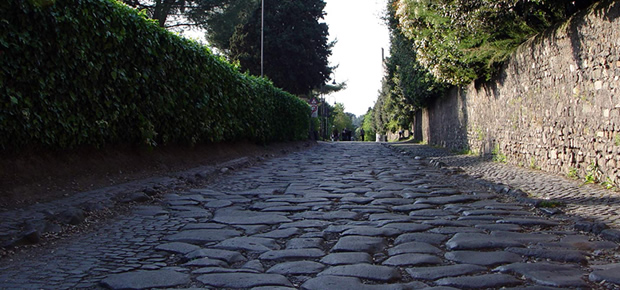
2.4 Art and technique
The Romans learned the taste for art by the Etruscans and later nurtured a great admiration for all artistic manifestations from Greece and the countries of Hellenistic culture. They were early talkers, then worked out their own forms and original, as the mural painting in fresco, relief and mosaic, who enriched public buildings and mansions.
At sculptures, who suffered the strong influence of the greek world and Etruscan-Italic, reached in portraits and historical narrative relief its most characteristic expressions. The features of the face of emperors, judges, soldiers and ordinary people were faithfully reproduced, to the smallest detail, in the public sculptures and funerary monuments. The historical narrative relief, whose major example is the frieze of Trajan's Column (after 106), was born from the need to explain the military enterprises and public events and religious, in which man, and no longer the gods, was the real protagonist of the. Around the third century. a.C. born in Rome, a painting with intent purely national, inspired – as the sculptural reliefs – businesses and the military victories of the Romans. With the gradual expansion, artists and craftsmen came to Rome from major art centers of the world greek; new themes and sources of inspiration came then became part of the Roman figurative repertoire. At the time of Augustus (27 a.C. – 14 d.C.) were fashion faux landscapes and architectures, that created the illusion of space expansion.
Where, however, the Romans excelled in the art that he really was more closely related with the practical needs of life: l'architettura. In their construction they were able to blend into a harmonious whole sturdy and decorative elements of Greek (columns, capitals, pediment and ornamental motifs) with the structural elements of Etruscan-Roman tradition, as the barrel vault and vaults. Great attention meted, for strategic reasons, economic and prestige, civil engineering. In fact, excelled in the construction of public buildings, a height of aqueducts and consular roads, which proceeded straight, despite the roughness of the terrain, thanks to the bridges and viaducts. The solutions adopted road were always brilliant and impressive works were efficient for centuries thanks to an extensive maintenance.
When, eg, nel III sec. d.C. the streets were left to themselves, Europe remained without roads until the modern age.
Always used local materials in construction. In Rome predominated by the tuff litoide warm ocher color burnished – very docile to the axes and chisels of stone mason, but solid and durable -, travertine and brick floors, or brick, that was imposed as a result of all the other materials. The most original and significant contribution of the Romans to build technique, however, is the concrete, cheap and durable material, also suitable in the construction of vaults and domes.
Given the huge amount of slave labor, the Romans gave little importance to the research of technological innovations and showed no particular inventiveness in technology. They knew, however, collect the largest technical and scientific heritage of the peoples with whom he came in contact – especially those of the Hellenistic culture – and spread it in all territories of the Empire. It was also about this encyclopedic knowledge of the many scholars who dealt with the most varied disciplines theoretical: from philology to agriculture, from geography to natural history.




